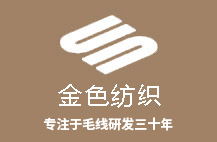NewsAbout Us
Textile classification
发布:admin 浏览:773次
According to the varieties of silk of the organization structure, the use of raw materials, processing technology, quality of a material, appearance and main uses of 14 categories.
According to the basic ancient silk fabric structure and fabric patterns, color naming. Modern silk continued to use the old name of many, such as crepe, silk, cloth, silk, also use the foreign language, such as Georgette Georgette, taffeta (taffeta). According to the varieties of silk of the organization structure, the use of raw materials, processing technology, quality of a material, appearance and main uses of, can be divided into yarn, Luo, silk, silk, textile, chiffon, crepe, brocade, satin, Didi, Pueraria lobata, velvet, silk, and other 14 categories.
Yarn: all or part of the by warp kink formation of uniformly distributed holes (i.e. "yarn eye") of the leno weave silk fabric, also known as plain gauze.
2: all or part of the Luo Luo silk fabrics from each other foul after showing pepper hole. Straight Luo, Luo, Luo, Romania cross flower branch.
3: the silk twill weave twill fabric or tissue, with the inclined surface fabric texture, texture. The surface of the fabric is folded early Chevron, "looking like icicle", so called ling.
4: the silk natural silk fabric of plain weave, delicate texture, smooth and stiff.
5: spinning by the plain weave, twist or weak twist no latitude and longitude lines, light and soft texture of silk fabrics.
6 Jin: the heavy, yarn dyed jacquard silk fabric woven with multicolor silk bright and colorful. Brocade is a famous jacquard silk, ancient have "woven as the text, the price of such as gold" said. There, Song Jin, the brocade brocade.
7: the satin satin weave or satin change organization, smooth appearance, bright and fine silk fabrics.
The 8 one: the plain weave, used as the filament, cotton or other yarn as weft, thick texture, clear weave fabric. A line of yarn, cloth cloth.
9. Ge: the plain weave, twill weave and the changes of the organization, the Song Wei Shu, the fine coarse weft fabric surface presents a transverse shuttle lines, thick texture of silk fabric.
10: the use of a variety of organizations, latitude and application of coarse thread, rich texture, silk wool.
11: all or part of the cashmere fleece organization, silk fabric surface is plush velvet ring.
12: the plain weave silk or silk fabric organization change, complicated closely. Silk is the silk. Its characteristic is: the silk surface fine crisp, smooth feel. No other obvious features are referred to as silk silk.
13: the use of plain or fake silk yarn, fabric texture, showing the through hole.
14: the plain weave crepe or other tissue, twist process application latitude strengthened, wrinkles effect of silk fabric. Its characteristics are: Silk Mask clockwise bidirectional wrinkles, Hikaruzawa Youwa, feel good elasticity, anti wrinkle efficacy.
Two. According to the use of textiles can be divided into three categories: clothing textiles, decorative textiles, industrial textiles.
Dress with [1] textiles including the production of clothing of all kinds of textile fabrics, sewing thread, elastic band, collar lining, outstanding point, also can say is a kind of Arts and crafts.
Decorative textiles points for indoor activities, bedding and outdoor activities, including home and restaurant bathroom products, such as: carpet, sofa sets, chairs, tapestry, patch, like hood, textiles, curtains, towels, tea towels, table cloth, the handkerchief, bedding, including the bedspread, bed sheet, quilt cover, quilt cover, blanket, towel, pillow, quilt core, pillow. Outdoor products including artificial turf, etc..
Textiles for industrial use and wide range of use, many varieties, common a cloth canopy, guns vests, filter cloth, screen, Lukib etc..
Three. According to the production method is divided into six categories, such as line type, tape, rope, woven fabric, textile cloth, etc.:
Line class:
The textile fibers are processed by spinning yarn, and the yarn is twisted by two or more yarns.
Beltings:
Twisted and tubular fabrics, referred to as band.
Rope:
Multi ply twist and a Dasheng.
Woven fabric:
Woven fabric with warp and weft is called woven fabric.
Knitted fabric:
The fabric and the knitted fabric, which are formed by the yarn into a circle, and the knitted fabric and the knitted fabric are directly formed.
Non-woven fabric:
Without the traditional textile process, and by the fiber assisted net processing of the thin sheet of textile, known as non woven fabric.
Fabric of the shrinking rate of the fabric shrinkage is refers to the fabric after washing or immersion, weave a percentage of the contraction, generally speaking, shrinkage of fabric is synthetic fiber and its blended fabrics, followed by wool, hemp fabric, cotton fabric in the middle, has shrunk considerably. The largest is viscose fiber, artificial cotton, artificial wool like fabric.

 Service hotline:
Service hotline: